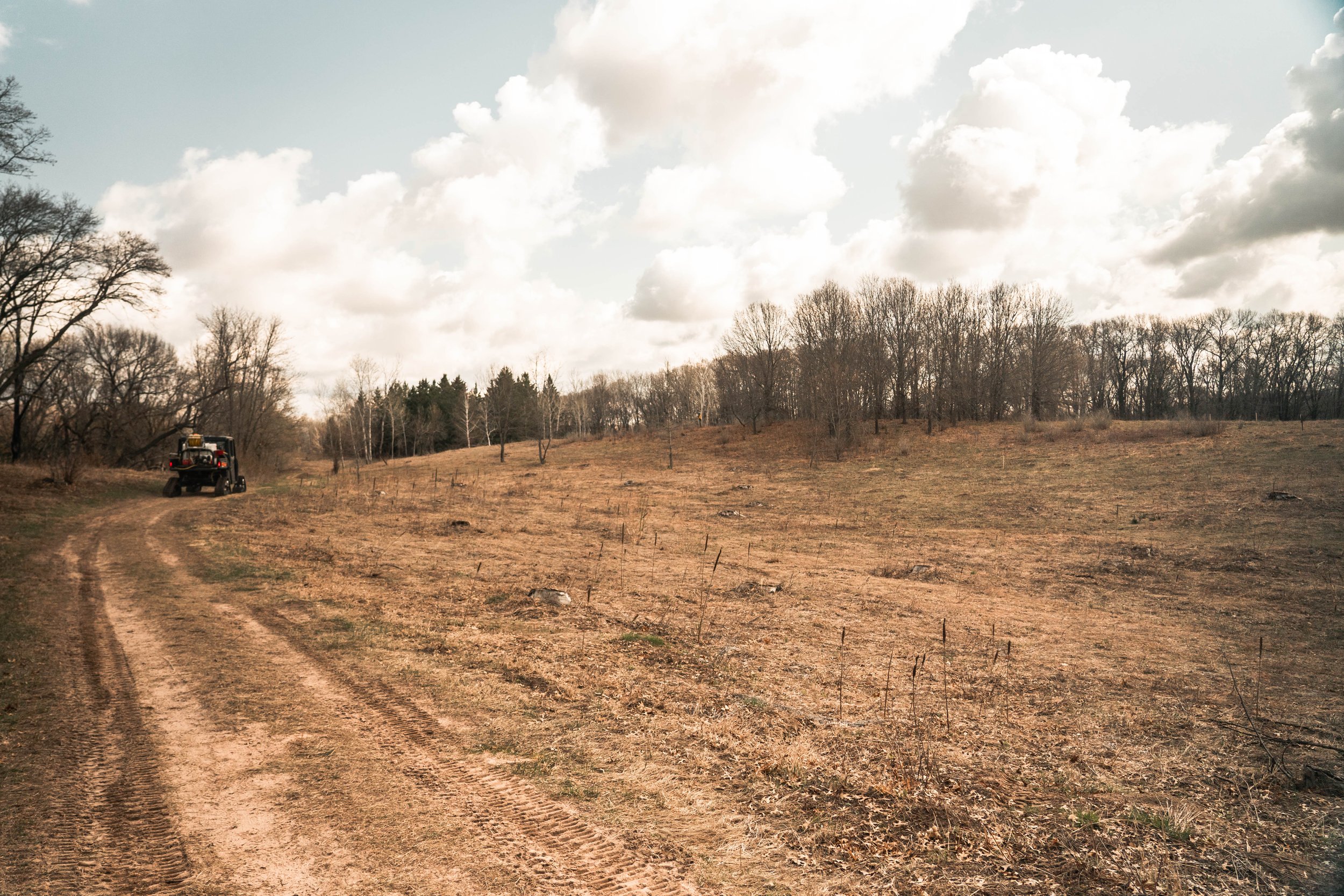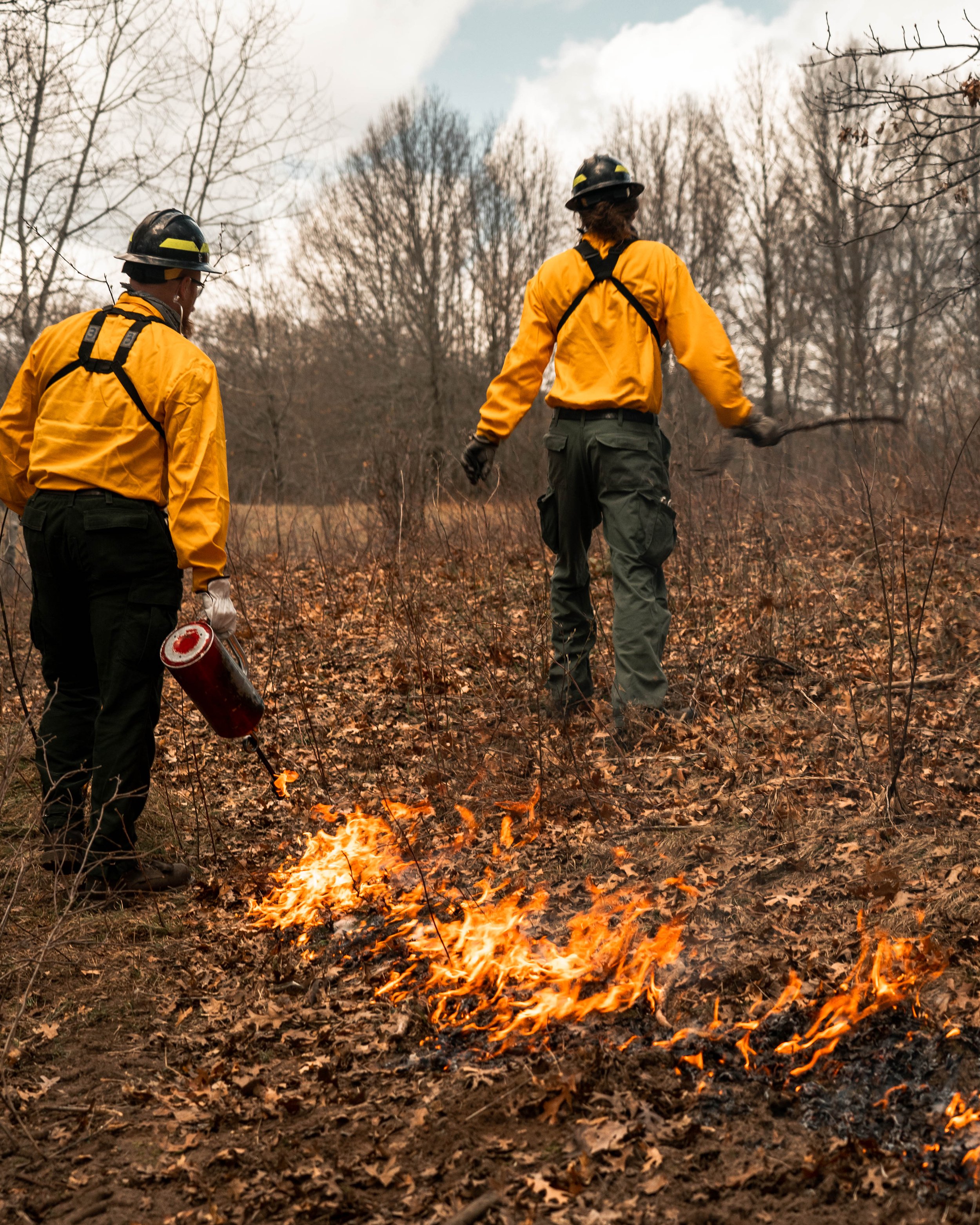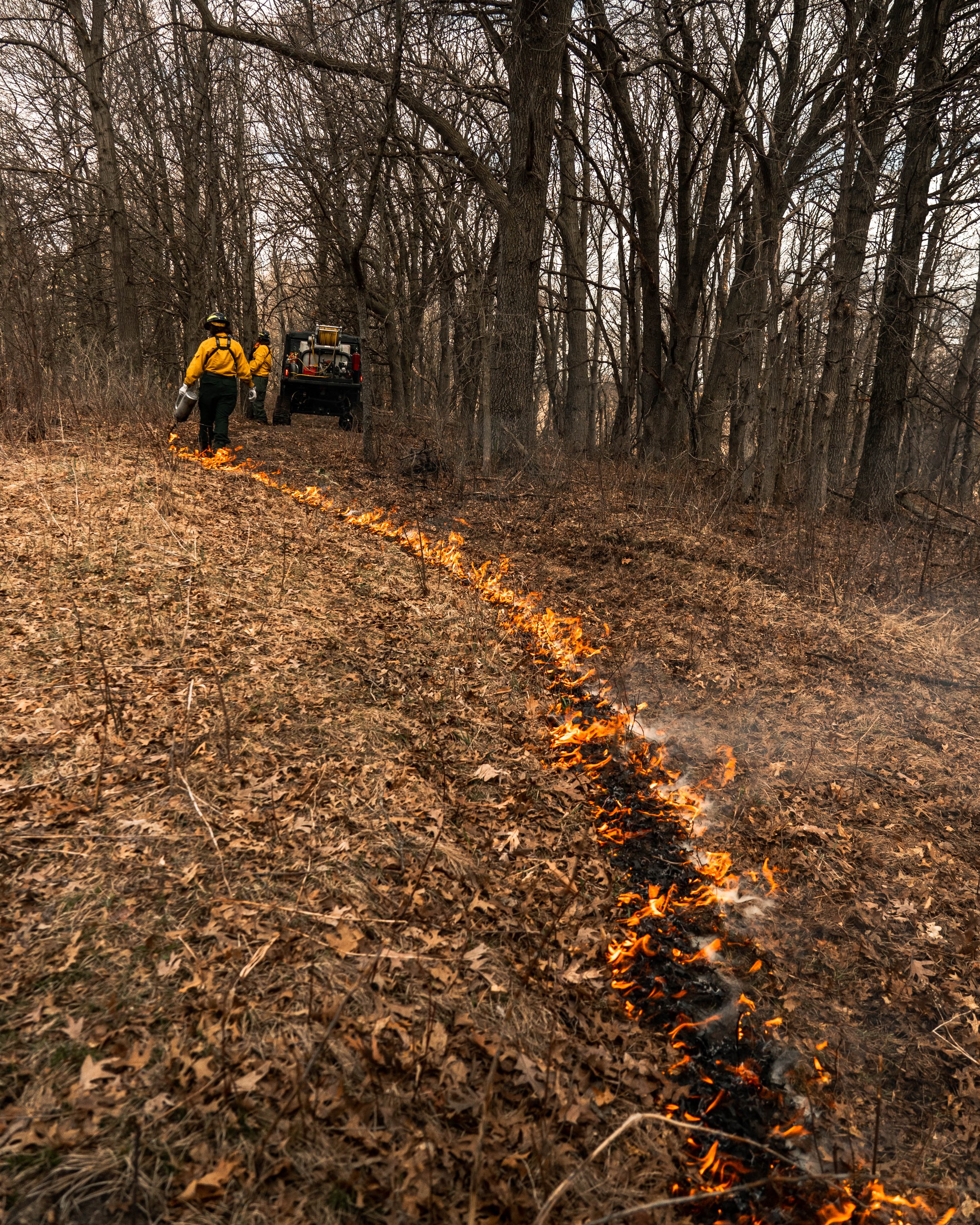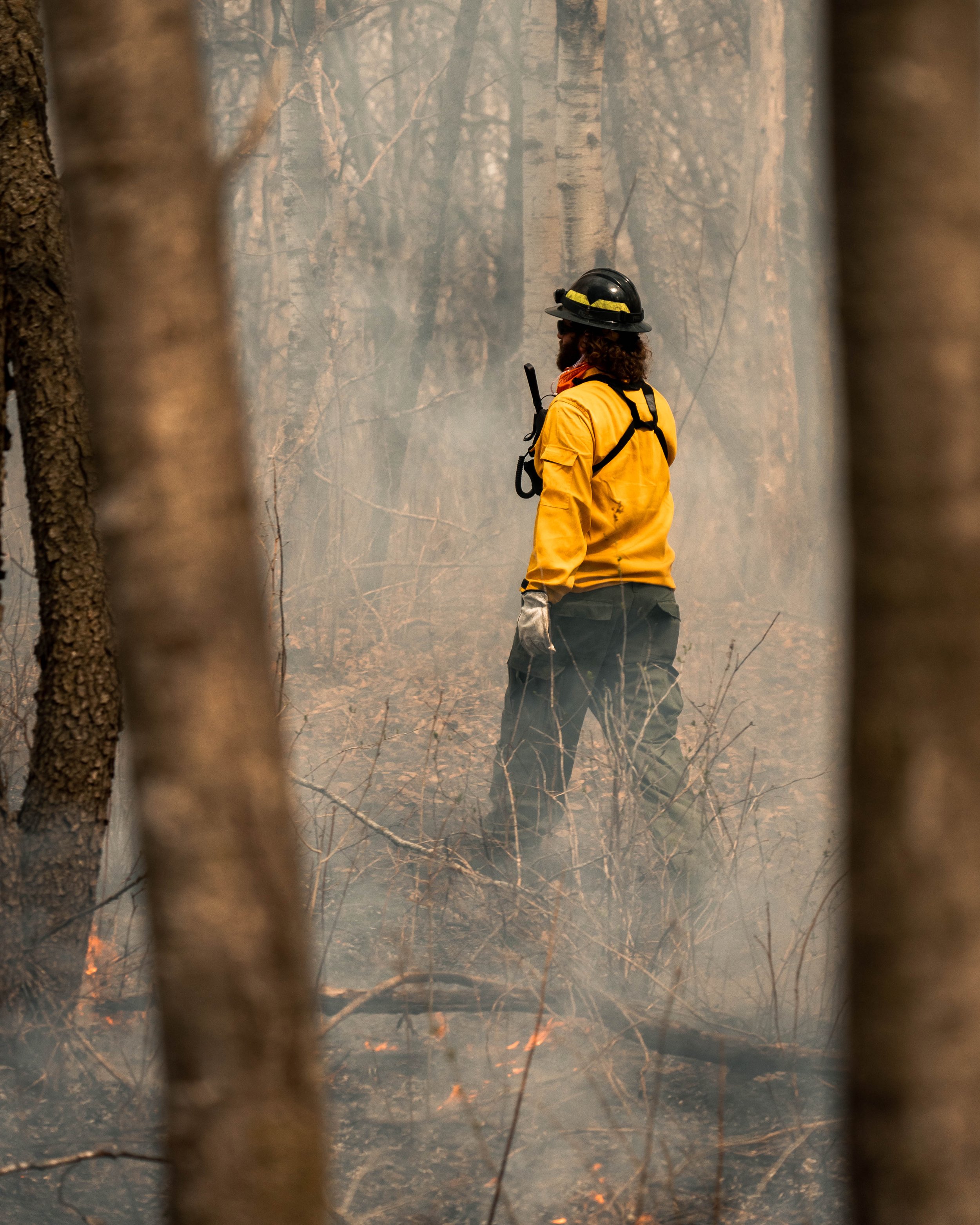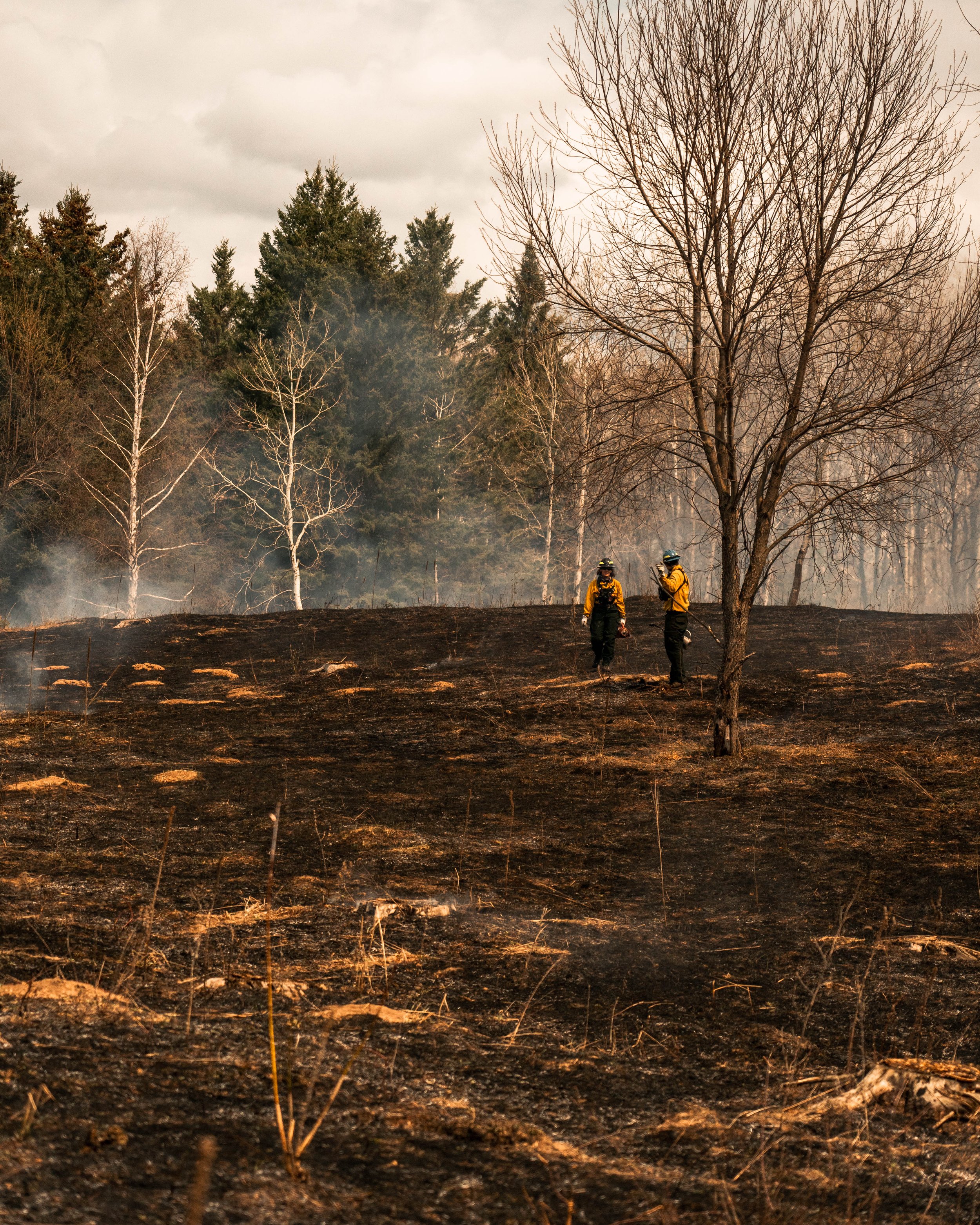Why Burn? How Prescribed Fire is Beneficial
Prescribed burns are a fiery subject. Get it?—Fiery.
Ok, bad pun. But jokes aside, whenever we talk about prescribed fire, there’s always a lot of concerns. Wildlife safety, wildfire escape, and smoke pollution are the most heavily cited, but there is also general uncertainty about intentionally lighting nature on fire. With all this concern, you might be wondering why conduct prescribed burns at all?
Prescribed burns are one of the best land management tools for many habitats across Minnesota. Understanding why they are so beneficial is important for both public land managers and private landowners who want to make the best decisions for their lands. Here, we will briefly cover some of the science and practice behind why we use prescribed fires, and why they are so beneficial to managing habitat. As always, feel free to contact us directly if you have specific fire concerns or questions.
Introduction to Fire History and Ecology
Fire has been a part of nature for centuries. Between lightning strike-caused fires to fires purposely lit by Indigenous peoples, many ecosystems have evolved naturally with fire. In Minnesota, our tallgrass prairies and oak savannas both depend on fire. Historically, most of these habitats experienced wildfires every 1-5 years, making their plant communities not only resistant to fire, but dependent upon it. Called ‘fire-dependent systems,’ habitats such as tallgrass prairie need frequent burning to sustain high levels of diversity, and maintain stability. After European settlement, wildfires were heavily suppressed due to concerns over safety to people and property. After centuries of wildfire suppression, a shift occurred in many fire-dependent habitats. Oak trees became outcompeted by faster-growing maples, hickories, and elms. Oak savannas became encroached by woody shrubs. Prairies became prone to weed establishment. All around, invasive species found a foothold where previously they would have perished due to recurring fire. These shifts in habitats and plant communities occurred all over the country, not just in Minnesota. Fire suppression also led to an increased risk of wildfire due to large accumulations of fuel and dead vegetation material that normally would have burned up with frequent fire activity. First and foremost, prescribed fire is an attempt to return a process of nature that, until recent centuries, has always been a part of Minnesota landscapes.
Ecologically, prescribed fires support important functions in native plant communities, promoting habitat stability and health. Plants and animals that are native to fire-dependent habitats have adapted to frequent fire. They have certain traits that allow them to survive blazes that kill off other fire-intolerant species that might outcompete them. For instance, big bluestem, a staple of tallgrass prairies, has root systems that reach up to 12’ below ground. Long root systems like this are common among fire-adapted prairie species. They allow these species to survive top-kill from fire, and resprout with a flourish after fire sweeps through. Similarly, oak trees have many adaptations to fire such as thick bark which allows them to survive flames that damage other trees.
So, some plants are adapted to survive fire—that doesn’t mean we should be torching them up. Just because it can survive fire, doesn’t mean it should have to, right?
Actually, the dominant plants in these habitats encourage fire. As in their traits not only help them survive flames, but promote fire itself. For example, many native prairie species retain old growth in the form of thick duff layers from previous growing seasons. This grassy duff creates ideal conditions for hot, fast burning fires which kill off shallow-rooted, quick growing weed species. The native species survive due to their long roots and can immediately start regrowing, giving them the competitive edge. These hot burning fires also kill woody shrubs and hardwoods, preventing them from encroaching on the prairie. Similarly, oak leaves are designed to encourage fire. They are thicker and drier than the leaves of other hardwood species. This means they decompose slower, and they are more flammable, creating a long-lasting fuel source. Additionally, oak leaves carry fire better than other hardwood leaves, encouraging hotter fires that top kill woody shrubs and fast-growing trees such as maples. Their bark protects oaks from top kill, allowing them to continue growing after fire while other hardwoods have to resprout. In both these examples, the adapted species encourage fire to give themselves a competitive advantage. Without fire, prairies are overcome with weeds and woody species; and oak savannas and oak forests become dominated by other hardwoods and invasive species like maples, elm, and buckthorn. This is why we call them fire-dependent systems, because without frequent fire disturbance, these habitats disappear.
Prescribed fire has many other ecologically beneficial effects:
Nutrients from the burned material release back into the soil.
The blackened earth following fire absorbs sunlight, heating the ground to promote new seed germination.
Burning up top vegetation allows better light penetration to encourage new growth.
Fire is necessary for the seed germination of some species.
Burning is a way of controlling some invasive species without the need for herbicide application.
Prescribed fire can safely burn up accumulated fuels that otherwise might cause dangerous wildfires.
Essentially, prescribed burning is a way to reap the ecological benefits of wildfire, in a controlled, safe manner. Ultimately, fire is necessary for some habitats to survive. Without it, Minnesota would not have healthy, sustainable prairies, savannas, and oak forests. We rely on controlled burns to keep fire on a landscape without the dangers and unpredictability of wildfire. Our ecosystems and natural resources depend on it.
In Practice
Behind all science is the question of practical application. We’ve covered the basics of fire ecology, so the question becomes, when is prescribed fire the right management tool? Every habitat will be different. The history, goals, and current conditions of a site need to be considered when electing a prescribed burn. Burns are an extremely versatile tool for many habitat restoration activities such as site prep, maintenance, or ecosystem recovery. Here is a list of a few practical applications of prescribed fire for landscape management.
Limit Invasive Species: Most non-native species are not adapted to the natural fire regime of this region, while many of our native species are fire tolerant due to adaptations like long root structures or thick bark. Therefore, burning can be useful for controlling invasive or non-native species by giving native species a competitive advantage.
Soil Nutrients: When plant material is burned, the nutrients can be returned to the soil. Prescribed burns act like a reset, enriching the soil with more nutrients. Most prairies experience a flush of new growth and species diversity following fire.
Site Prep: A recently burned site makes the perfect canvas for planting or seeding. Burning before seeding is a way of mimicking natural successional processes, but allows us to control what kind of plant communities return to the site, allowing us to restore native habitats. The blackened earth also absorbs more sunlight, improving growing conditions.
Oak Regeneration: Oak trees are impressively fire resistant. Their thick bark protects them from low-intensity fires, and their seedlings can survive even partial burning from fire. The hardwood forests of the upper Midwest were historically oak dominated because of fire. Oak trees are very slow growing, and their seedlings can easily be crowded out by faster growing species like maple and aspen. Frequent fire helps oak regeneration by knocking back seedlings of faster growing species that are not adapted to fire. Returning fire to forests through prescribed burning is a key part of oak forest regeneration.
Prairie Maintenance: Prairies are fire-friendly ecosystems. Native prairie grasses and flowers have long root structures that allow them to easily survive fast burning surface fires. Fires also burn off old, dead plant material, returning it to the soil and opening up light for new growth to thrive. If your prairie is losing species diversity, is getting overrun with woody species, or is generally ‘going downhill,’ a prescribed burn will bring new life into your prairie.
Reduce Wildfire Risk: Areas where there is a lot of fuel build up from downed woody debris, duff layers, or dead logs are prone to wildfire. This understory debris provides a large fuel source that can turn a benign wildfire into a massively destructive one. Prescribed fire can be useful for reducing fuel loads in a controlled manner to mitigate wildfire risk.


